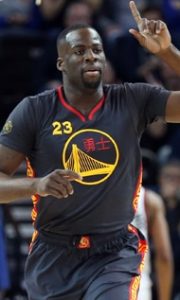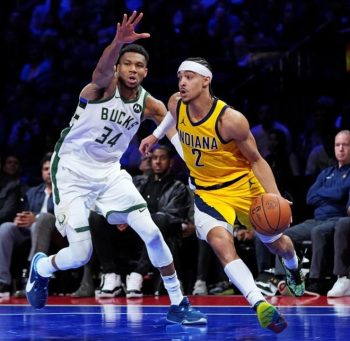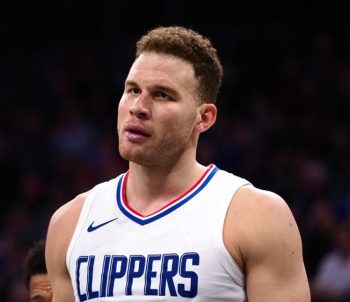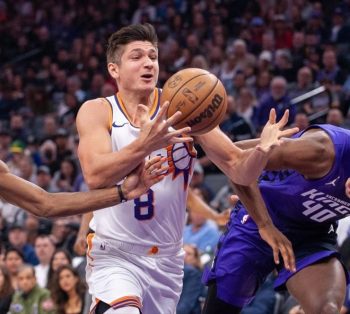NBA
Draymond Green Redefines NBA ‘Greatness’

Draymond Green may have made some enemies and lost a few friends during these playoffs, but let’s face the facts: the NBA would probably be a better place if more players were like him.
In Green, the league has seen the emergence of a superstar from an unlikely source — a doughy, undersized forward who didn’t become a full-time starter until his junior year in college.
Somewhere between then and now, 34 players were deemed more valuable. He went from playing for a minimum salary and backing up David Lee to earning nearly a maximum salary and being a linchpin on one of the greatest NBA teams in history.
I have no problem admitting when I am wrong. And I was wrong about Green — he’s one of the greatest players I have ever seen.
* * * * * *
What makes pro sports and arguments around them so compelling and so worthwhile is the degree to which subjectivity enters the equation.
What does it truly mean to be “better” than another player? Do we use common statistics? Advanced statistics? Wins? Championship rings?
How easy it is to quantify greatness? Is it quantifiable?

After watching Green over the past two years, it has become obvious that he’s worth his weight in gold; there is no way that the Golden State Warriors become champions without him.
One of the greatest things about professional basketball is that, unlike many of the other professional sports that we watch, the degree to which there is position specialization is minimal. In football, a quarterback who can’t run quickly won’t hinder an offense so long as he makes quick decisions and has a capable offensive line. In baseball, a pitcher doesn’t need to be able to hit a lick so long as he can throw a 95 mile per hour fastball. In hockey, soccer and most other team sports, position specialization is key. In pro basketball? Not so much.
In the past, many NBA teams have failed to win big because the approach at the front office level was built on a farce. You can’t outsource hustle. You can’t outsource heart and you can’t outsource work ethic. Any team that is built around a “superstar” who isn’t the first one in the building and the last one to leave is doomed to fail. At least partially, the failure to galvanize and fuel teammates by leading by example can tell the story as to why Charles Barkley, Allen Iverson and Carmelo Anthony haven’t been able to get it done.
So as to not go off on a complete tangent, the point in this is simple: Draymond Green has taken the idea of “position-less basketball” to a new stratosphere. He’s a leader in every sense of the word. He doesn’t take shortcuts. He doesn’t give up on any play, and at the end of the day, in an NBA dominated by entourages and fraternizing, Green doesn’t give a damn about your team or friendship. All Draymond cares about is winning, and he’ll do whatever it takes to ensure that his team does.
When Kevin Garnett entered the league back in 1995, the world marveled at the things that the 18-year-old seven-footer was able to do. Garnett had the length of a center, but the nimbleness and vision of a guard. Dirk Nowitzki would eventually prove to have similar DNA before Kevin Durant turned the idea of size limitations on its head. Between these paradigm-shifters were other players who muddied those lines, most notably Lamar Odom. Odom never lived up to this true potential, but his legacy will always be one of a player whose rare combination of versatility and size made him a matchup nightmare.
As the NBA has seen its game revolutionize, position-less basketball has become the norm. Out of necessity, teams employ “stretch fours” and run motion offenses to keep pace with the quicker pace and free-flowing ball movement that has become synonymous with winning.
In the end, in order to succeed in today’s NBA, every team needs front court players who are capable of dominating games in a plethora of ways.
Someway, somehow, each general manager needs to find the basketball equivalent of a unicorn — a player with enough size and strength to guard a center but light-footed enough to stay in front of an opposing guard. The unicorn has to be able to handle the basketball, run the floor, make the right pass and hit the three-point shot. And above all, he has to be willing to adapt his game and his output at a moment’s notice, depending on what the current situation requires.
Most importantly, he has to do so without his ego getting in the way and without allowing the want of personal accolades and flashing lights to blind him to the chase of the team’s goal.
Indeed, every general manager and every franchise is searching for the basketball unicorn.
Only the Golden State Warriors have managed to find him.
* * * * * *
Stephen Curry slowly dribbles the ball up the floor. He stops at the top of the key long enough for Green to get in position to run the team’s well-renowned “1-4” pick-and-roll. When the defender goes under the screen, Curry launches a three-pointer from the parking lot and drills it.
The next time, the defenders decide to stay at home, but Curry’s defender gets hammered by a picture-perfect screen set by the rock solid Green. As Curry makes his beeline to the basket and the defense predictably collapses, Curry finds a wide-open Harrison Barnes in the corner for a three-pointer.
The next time Green and Curry execute their pick-and-roll, the defenders decide to blitz and trap Curry. He easily gets the ball to Green who makes his own beeline to the basket. When the rotation arrives late, Green converts a layup while drawing a foul.
Three different scenarios and three different situations — Green is never out of sorts.
On the defensive side of the basketball, Green — who barely stands at 6’8 — routinely outworks and out-hustles opponents to whom he yields up to six inches in height. At the same time, a part of what makes the Warriors defense nearly impregnable is his ability to switch out on smaller, quicker, opposing offensive players and harass them on the perimeter.
In terms of on-court attributes, it’s difficult to argue that Green has any weakness. Emotionally, perhaps he is unstable. Maybe he complains a bit too much, and his recent altercation with LeBron James will keep him off the court in Game 5. But that type of player will never have trouble finding work in the National Basketball Association. And he will seldom have trouble winning.
After watching Green closely over the past two seasons, he has helped me rethink my definition of a “great” player.
A great player isn’t one who accrues numbers and statistics. In fact, a truly great player may need to find a way to emotionally separate himself from caring about his statistical production altogether.
A great player isn’t one who, as I once thought, needed to be able to score 25 points per night or lead a lottery team to the playoffs.
Instead, a truly great player is one who manages to have a tremendous amount of “game impact.” A great player is one who brings energy and effort every single night and doesn’t allow a lack of touches on the offensive end or his number not being called to impact his work ethic.

You simply can’t put a price on that.
* * * * * *
The Warriors have emerged as one of the all-time great basketball teams. The beauty in their ascent is the cooperative effort that it required. The 73 regular season wins didn’t happen because Stephen Curry scored 50 points per night, and they didn’t occur because Steve Kerr out-coached every single one of his opponents.
Those 73 wins came as a result of camaraderie, interchangeability and an overall lack of concern over who should receive the most credit.
Both figuratively and literally, Draymond Green has been in the center of it all and it’s something that one could only understand if they have had the opportunity to watch him closely.
Fortunately, for me, I have.
Neither in dollars nor in box scores is greatness quantifiable. Draymond Green taught me that, and if you’ve been watching closely, he would have also taught you what it means to be a fearless competitor and a winner in today’s NBA. He may have made a few enemies and lost a few friends, but winning comes at a cost.
Make no mistake about it, in blood, sweat and tears, Green always has and probably always will be willing to pay that price.
And only a great player is willing to do that.











